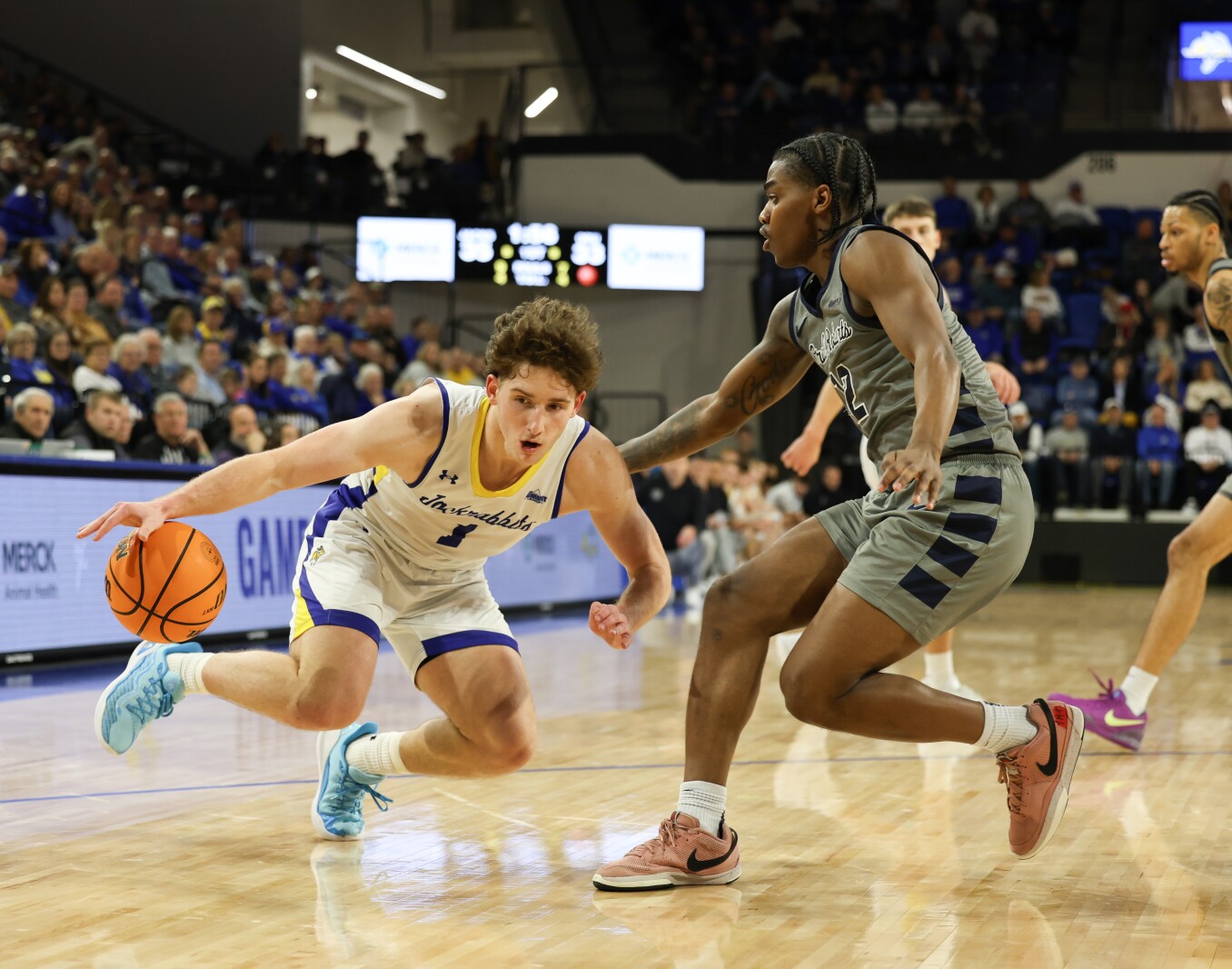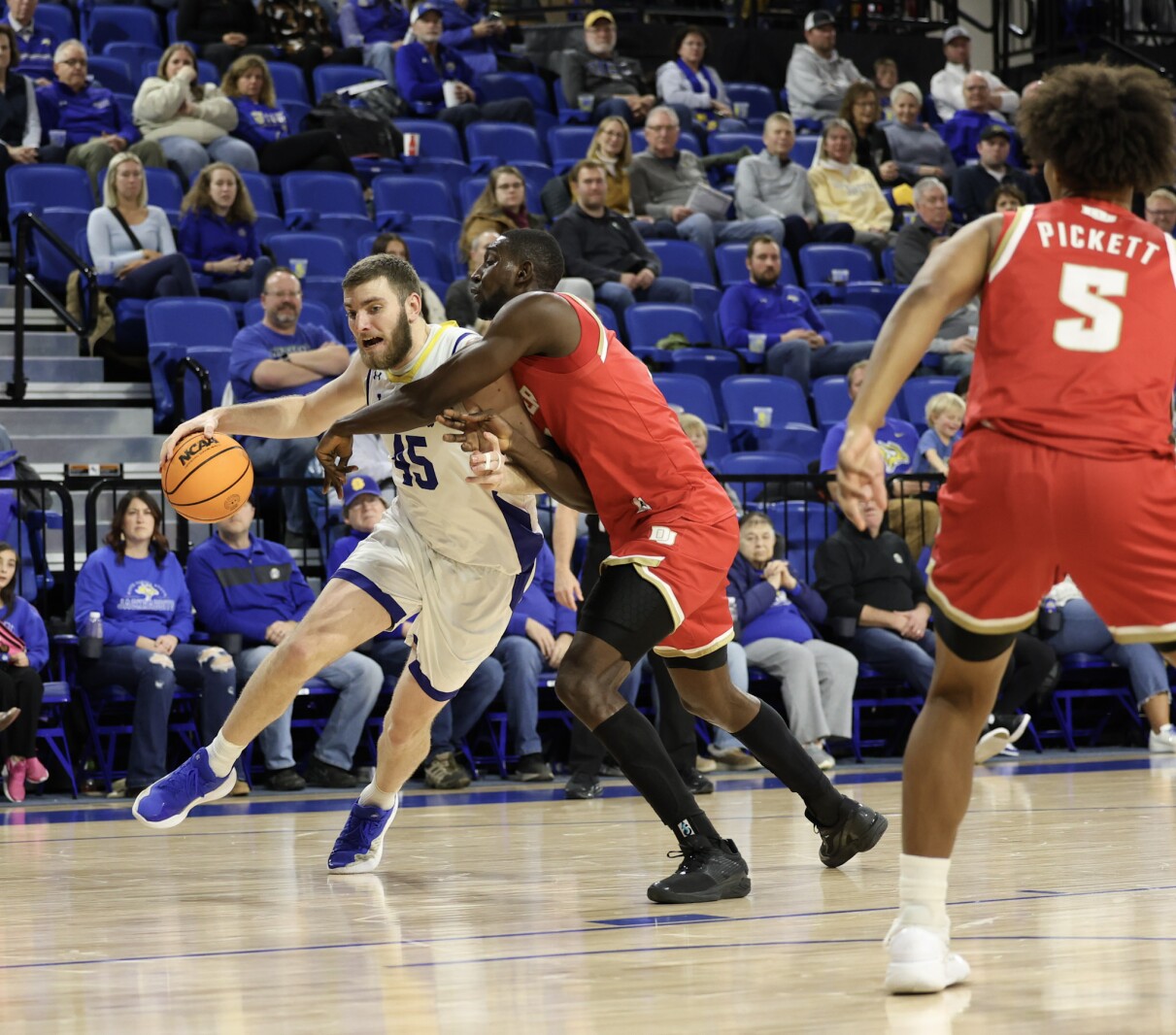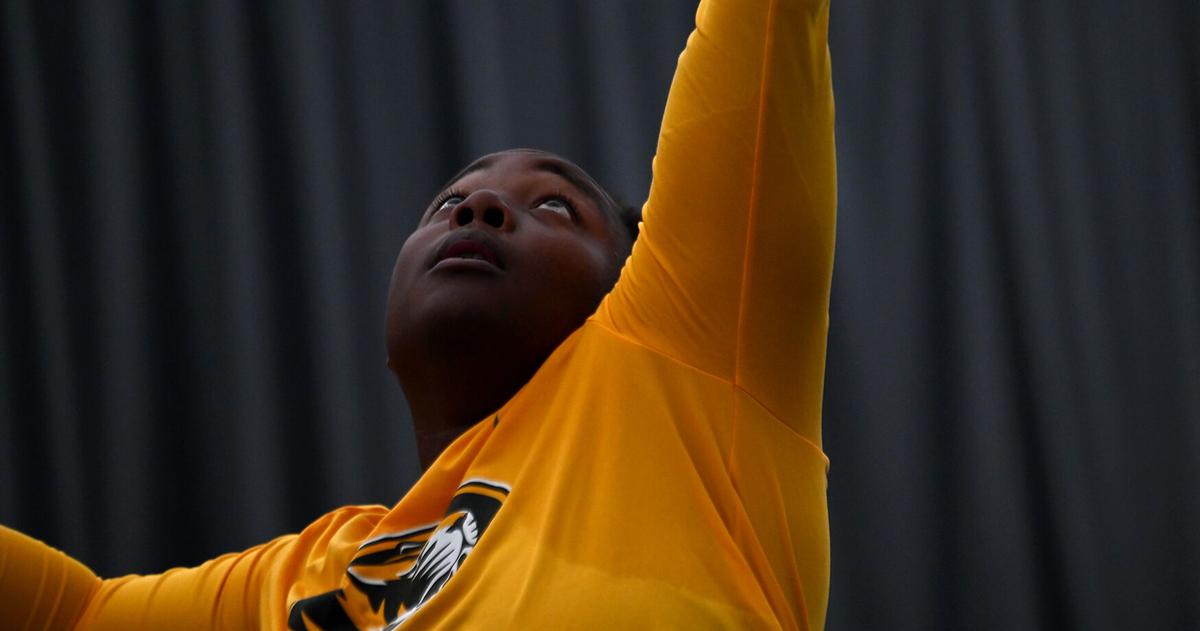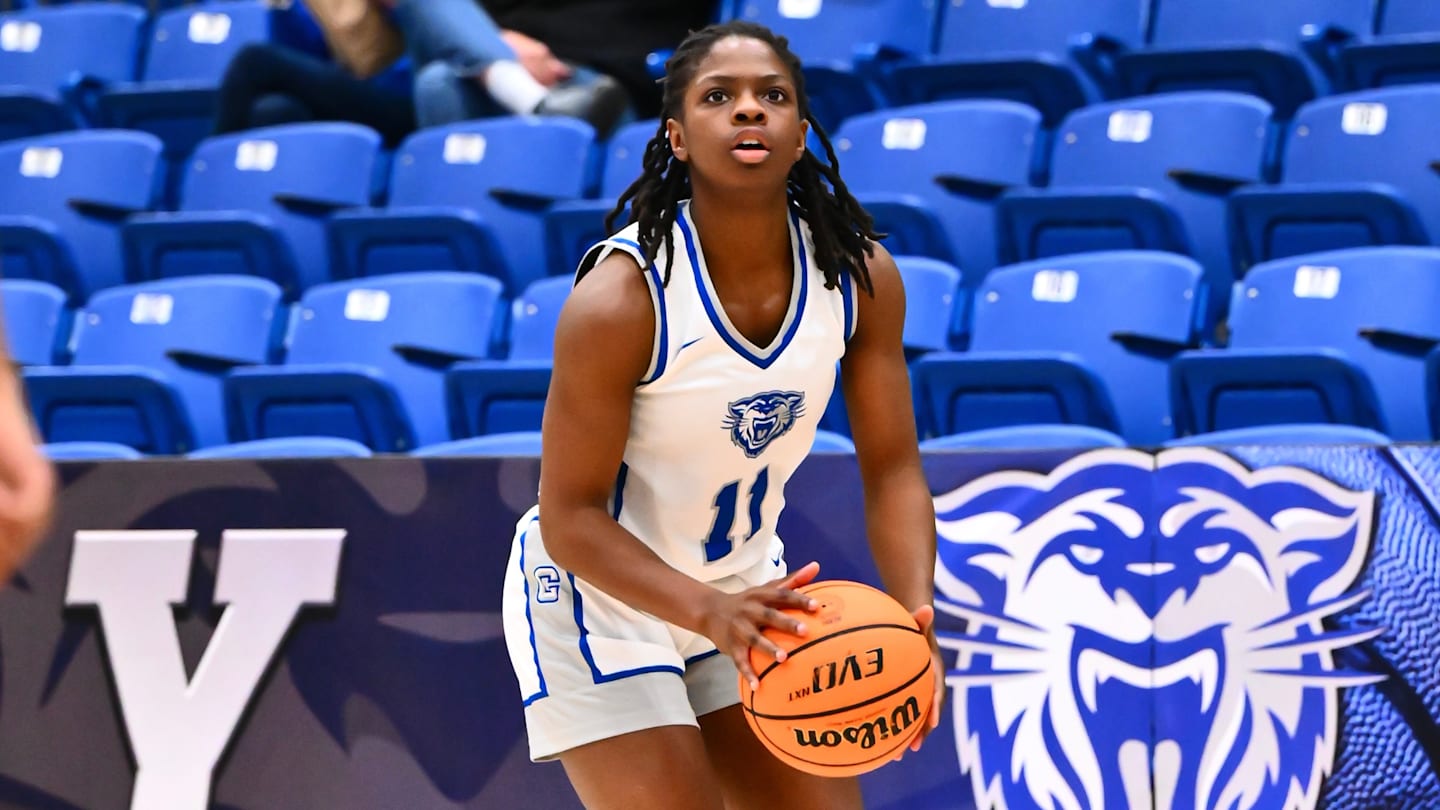South Dakota
South Dakota State running game goes off in road win over Illinois State

NORMAL, Ill. — A battle between two of the best defenses in the nation unexpectedly turned into a shootout, but the Jackrabbit offense was better equipped for that than was Illinois State, and No. 1 South Dakota State walked out of Hancock Stadium with a 40-21 win over the 22nd-ranked Redbirds. SDSU improves to 5-0 with the win and extends their school-record winning streak to 19.
For the second week in a row, the Jackrabbits’ offensive line was the star, as Garret Greenfield, Mason McCormick, Gus Miller, Evan Beerntsen, John O’Brian and Quinten Christensen paved the way for SDSU to grind up 374 yards on the ground — 197 for Isaiah Davis and 106 for Amar Johnson. SDSU had 547 yards of total offense. Those numbers would be impressive no matter the opponent, but they were especially noteworthy against this defense. When the day started, Illinois State’s defense was allowing averages of 12.3 points, 58 rushing yards and 252 total yards per game.
The Jacks scored every time they had the ball in the first half, taking a 20-0 lead after one quarter, going into halftime leading 34-14, and then sharpening up on defense after the Redbirds briefly made things interesting in the third quarter by cutting the lead to 34-21.
“I think the best defense is a great offense,” coach Jimmy Rogers said postgame. “We came out and performed the way we were capable of. We were hard to get off the field. That was extremely impressive against that defense. Proud of (the offensive line’s) efforts. The push, the consistent blocking on the perimeter, and I don’t know if there’s a better running back in college football right now than Isaiah Davis.”
Mark Gronowski had another big game, too, throwing for 171 yards and three touchdowns and adding a touchdown on the ground.
His 31-yard strike to Jadon Janke gave SDSU a 6-0 lead, and it was 13-0 on a 60-yarder to Jaxon Janke. Gronowski took it in on a keeper on 3rd down to make it 20-0 before Illinois State finally got on the board on a reverse pass, with Daniel Sobkowicz finding quarterback Zack Annexstad for a 9-yard touchdown that made it 20-7 in the second quarter.
After Davis scored from 2-yards, out Annexstad returned the favor with a touchdown pass to Sobkowicz to make it 27-14 before Gronowski connected with Jadon Janke again, this time from 22 yards away to make it 34-14 at half.
After the Redbirds (3-2, 1-1) got it back down to 13 on a Mason Blakemore touchdown run ISU got its first stop of the night, giving their offense a chance to make it a one-score game. That’s when the SDSU defense found its footing. Saiveon Williamson forced an Annexstad fumble that was recovered by Jason Freeman, and after the teams traded stops, Davis broke off a 49-yard run moments after a 70-yard touchdown run had been negated by a holding penalty. That set up his own 2-yard score to put it out of reach.
Annexstad completed 26-of-33 passes in the game but for just 162 yards. Adam Bock was out injured again after making his debut last week, but Williamson made a team-high 10 tackles in his place. Freeman and Cale Reeder added eight apiece, while Cade Terveer had a sack.
“Overall it was a good game but we need to get better,” Rogers said. “Defensively we were never really in the flow of the game but the turnovers were huge. We’ll get better.”
Matt Zimmer is a Sioux Falls native and longtime sports writer. He graduated from Washington High School where he played football, legion baseball and developed his lifelong love of the Minnesota Twins and Vikings. After graduating from St. Cloud State University, he returned to Sioux Falls, and began a long career in amateur baseball and sports reporting. Email Matt at mzimmer@siouxfallslive.com.

South Dakota
South Dakota Company Recycles Plastic Into Fence Posts | Aberdeen Insider

Many farmers are frustrated with all of the plastic that clutters their farmyards.
Tarps from silage piles, plastic containers, net wrap, totes and drums pile up. It is estimated that 12.5 million tons of agricultural plastic are used annually in the U.S.
A company near Lennox transforms the plastic generated on farms and from other sources into something that every farm needs — 4-inch and 6-inch fence posts. It’s a brilliant example of waste reimagined.
Billy Pollema, vice president of sales for ZahnTech, said the company transforms waste plastic into a product needed by the ag market.
“We sell these posts nationwide, and some have gone to Florida and the Caribbean islands. In those places, they struggle with wood posts rotting due to the salt water and humidity, so this is a good fit for them,” Pollema said.
MORE: New agricultural business program will start next fall at Northern State
“Currently, the company processes 30,000 pounds of plastic daily,” he said. “We take it in, shred it, melt it and turn it into something useful. Our goal is to triple what we can process.”
People are thinking more about being sustainable and many want to get to zero waste. The company wants to rebrand recycling and change the way the world views garbage.
ZahnTech is eager to keep plastic out of the landfill.
“We encourage people to bring plastic to us from all over South Dakota. We are even getting some from Wyoming. Our company is partnering with farmers plus different industries. We take it all in as long as it is plastic. There are seven types of plastic in our formulation,” Pollema said.
Trucks constantly pull up to drop off their loads, he said.
“We take chemical jugs as long as they’ve been properly rinsed. We get thousands of barrels from ag companies during the summer and fall, plus plastic pallets,” Pollema said. “We’ve partnered with the city of Beresford to take their curbside pickup materials. Every two or three weeks, it comes to us in bales. They’ll dump it in our shed and we’ll take it from there. We do not accept liquids, glass, metal or hazardous chemicals.”
In addition to ag plastic, ZahnTech is getting semi loads of plastic waste from many industry partners, including Glanbia Nutritionals, which has locations all over the country. Recently, 10 semi-loads of Walmart bags were dropped off. That’s 500,000 pounds of bags waiting to be shredded.
The process uses a primary shredder and a secondary shredder, reducing the plastic to three-eighths inch. Then the material goes through the hot melt extruder and flows into molds for the 4-inch and 6-inch posts.
MORE: Latest 2024 farm income forecast shows overall decrease from 2023
There’s strong demand for the posts.
“We price them to be competitive with the wood market as farmers don’t want to pay more than they have to. ZahnTech is one of the few companies using this process. In addition to the company in New Zealand, there is one in Canada and one in Pennsylvania,” Pollema said.
He was at the recent Dakota Farm Show in Vermillion showing people the pros of using the posts and explaining what the company does. The plastic posts can replace the green-treated posts or posts treated with creosote to prevent rot. Wood posts normally need to be replaced every 10 years or sooner. ZahnTech information said testing shows their posts will last 100 years.
Business sparked by frustration from lack of plastic scrap recycling options

The owner, Avery Zahn, started the process, and Pollema shared Zahn’s story.
Zahn has owned a pipeline business. His frustration stemmed from the lack of plastic scrap recycling options, forcing him to take the materials to the landfill. After he sold his business, Zahn noticed the railroad ties around his horse arena were rotting and needed to be replaced. Remembering the unrecyclable plastic, he searched for a way to make something usable from it, such as fence posts. He found that in New Zealand, a company developed a process to do that.
“He bought his first extrusion machine from New York, brought it to South Dakota and started figuring out a way to melt the plastic and turn it into fence posts,” Pollema said “Avery tried different formulations and produced a composite to get the posts to the needed strength. After a year and a half of research and development, the company started making and selling products. That was a year and a half ago. It all started with Avery looking at the posts and deciding, ‘I’m going to come up with a better way.’”
The biggest cost for ZahnTech is electricity, with 3,000 amps of service coming into the production facility.
“It’s our major cost and it would be great if we could reduce that, maybe by using some solar power,” Pollema said.
MORE: Invenergy plans 250 megawatt wind farm in Frederick area
While the electricity is expensive, the plastic is free.
“People are looking for places to get rid of their plastic,” he said. “We are diverting as much from the landfill as possible. It’s a great selling point for our posts as people can see we are doing something good for the environment. For years, people buried plastic, and it will take years to degrade. Many people get behind what we are doing.”
ZahnTech produces 300 plastic fence posts per day
The company produces 300 posts a day with six people in the production line who do the shredding, bundling, receiving material and fabrication. In all, there are 11 employees.

The goal is to handle 40,000 to 50,000 pounds of plastic a day with the two main lines. When ZahnTech adds another line, it will be able to handle 60,000 to 70,000 pounds a day.
Currently, ZahnTech is transforming 98% of waste into sustainable products,” Zahn said.
“We’re not far from achieving our goal — 100% waste conversion. The company wants to build a greener, cleaner world, one fence post at a time,” he said.
On its website, ZahnTech claims its posts are 10 times stronger and 20 times more durable than wood. They are flexible and can be post-driven, cut, drilled, nailed, screwed, bolted or stapled. The posts are fire-resistant, non-conductive, won’t split or rot and are impenetrable by water, frost and pests, per the website. They can also be pulled up and repositioned.
Connie Sieh Groop of Frederick is a veteran journalist and writer who has focused on all aspects of the agriculture industry during her career.
South Dakota
Mizzou wins double header against South Dakota, Northern Illinois
South Dakota
Sunday Forecast: Western South Dakota in for a Frigid MLK day
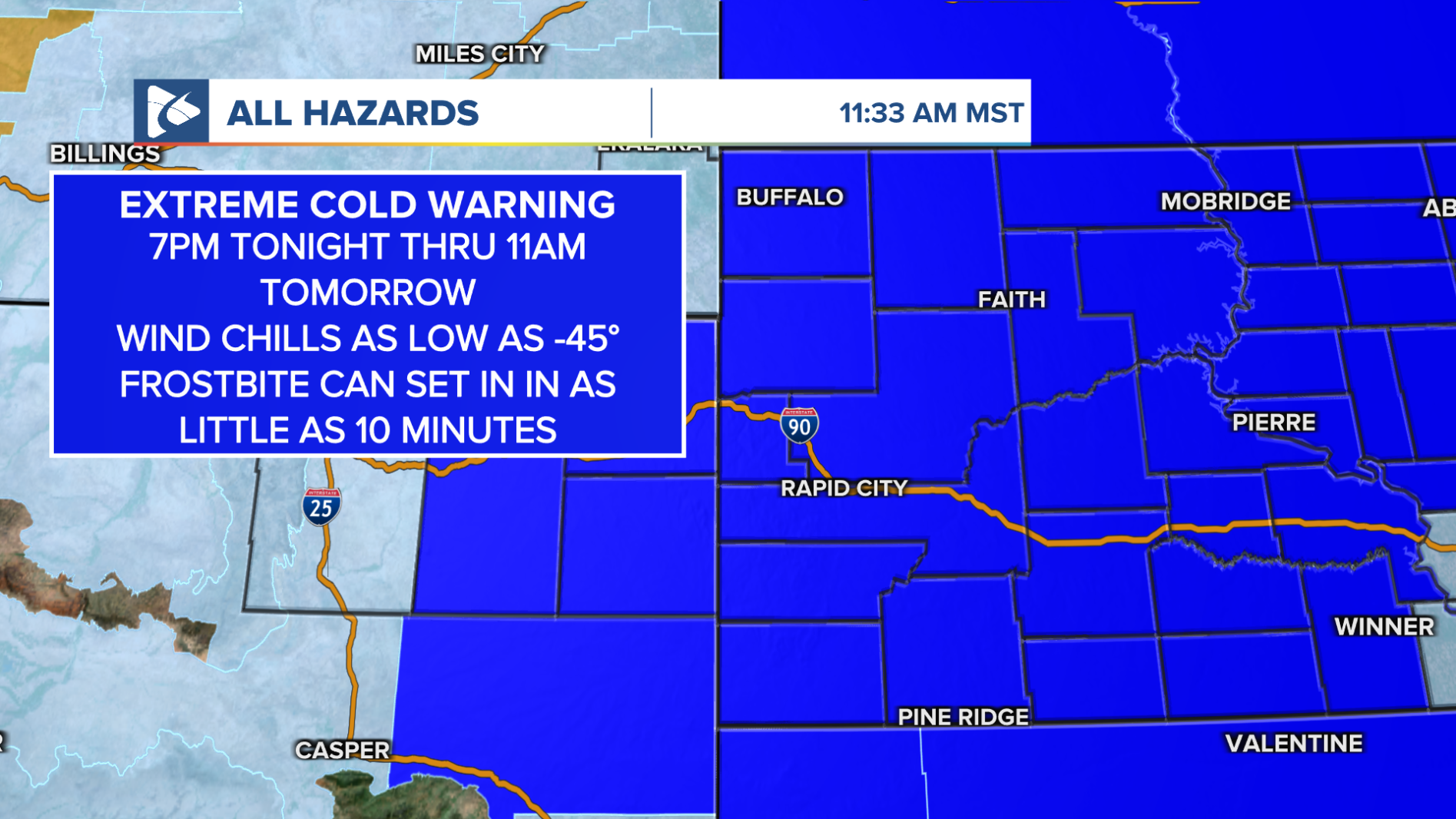
BLACK HILLS REGION, S.D. – Many folks have a three day weekend in observance of Martin Luther King Jr. Day! And it will be a good day to stay inside and stay warm. The National Weather Service has issued an Extreme Cold Warning for portions of western South Dakota and northeast Wyoming. Wind chills are expected to be as low as -45° especially in the Northen Hills. Other offices have followed suit with Extreme cold Warnings covering most of the Northern Plains.
This extreme cold is unusual and potentially dangerous, with the National Weather Service forecasting “the coldest wind chill readings of this outbreak”. The Extreme Cold Warning for our region is in effect from 7pm this evening to 11am tomorrow, with a Cold Weather Advisory until 8am Tuesday.
Expect a high around 9°F in Rapid City with an overnight low of -14°F. Wind chills will bottom out around -30°F just after sunrise. The Deadwood area will see similar conditions, with an overnight low around -19°F and wind chills potentially plummeting to -45°F or even lower! Winds will be relatively calm tonight at 5 to 10 mph but will pick up to 10 to 20 mph with gusts up to 35 mph by tomorrow morning. This is why the wind chill will be coldest around sunrise rather than in the midnight hours.
Per Lundquist
There is still some slight flurries falling over northeastern Wyoming, which could lead to icy and partially snow-covered roads, but things will be clear by this evening. Clear skies at night typically help cool temperatures even further, because the surface of the Earth radiates off infrared radiation into space, which is a loss of energy and causes temperature to fall. With no sunshine to replenish that energy and no cloud cover to keep it from escaping, we’re going to cool off quite a bit.
It’s important to remember that frostbite can occur quickly in extreme cold, and with wind chills, it can happen even faster. According to University of Colorado Health, when the temperature is 5°F and the wind speed is 30 mph, frostbite can develop in just 30 minutes. At -5°F with the same wind speed, it may set in within 10 minutes. With wind chills expected to reach -45°F in some areas, frostbite can occur on exposed skin even sooner. Symptoms of frostbite usually begin with the affected parts feeling cold and painful. If exposure to the cold continues, you may feel pins and needles before the area becomes numb as the tissues freeze. If you think you or someone else may have frostbite, seek immediate medical attention.
We should see some relief on Tuesday with temperatures warming back up to the low 30s under partly to mostly cloudy skies. The next clipper type system will bring low chances for light snow Tuesday night through Wednesday night along with breezy to windy northwest winds.
Rapid City 7 Day

Per grew up in Sioux Falls and graduated from South Dakota Mines. He found his passion for weather reporting by the impact it has on the community, both in how people work and how it brings people together through severe weather preparation. He also has a passion for preventing health issues with Air Quality Index awareness. Per can be found enjoying outdoor activities in the Black Hills when the weather allows.
-

 Science1 week ago
Science1 week agoMetro will offer free rides in L.A. through Sunday due to fires
-
/cdn.vox-cdn.com/uploads/chorus_asset/file/23935558/acastro_STK103__01.jpg)
/cdn.vox-cdn.com/uploads/chorus_asset/file/23935558/acastro_STK103__01.jpg) Technology1 week ago
Technology1 week agoAmazon Prime will shut down its clothing try-on program
-
/cdn.vox-cdn.com/uploads/chorus_asset/file/25826211/lorealcellbioprint.jpg)
/cdn.vox-cdn.com/uploads/chorus_asset/file/25826211/lorealcellbioprint.jpg) Technology1 week ago
Technology1 week agoL’Oréal’s new skincare gadget told me I should try retinol
-
/cdn.vox-cdn.com/uploads/chorus_asset/file/25832751/2192581677.jpg)
/cdn.vox-cdn.com/uploads/chorus_asset/file/25832751/2192581677.jpg) Technology5 days ago
Technology5 days agoSuper Bowl LIX will stream for free on Tubi
-

 Business6 days ago
Business6 days agoWhy TikTok Users Are Downloading ‘Red Note,’ the Chinese App
-
/cdn.vox-cdn.com/uploads/chorus_asset/file/25835602/Switch_DonkeyKongCountryReturnsHD_scrn_19.png)
/cdn.vox-cdn.com/uploads/chorus_asset/file/25835602/Switch_DonkeyKongCountryReturnsHD_scrn_19.png) Technology3 days ago
Technology3 days agoNintendo omits original Donkey Kong Country Returns team from the remaster’s credits
-

 Culture2 days ago
Culture2 days agoAmerican men can’t win Olympic cross-country skiing medals — or can they?
-
/cdn.vox-cdn.com/uploads/chorus_asset/file/24774110/STK156_Instagram_threads_1.jpg)
/cdn.vox-cdn.com/uploads/chorus_asset/file/24774110/STK156_Instagram_threads_1.jpg) Technology7 days ago
Technology7 days agoMeta is already working on Community Notes for Threads
